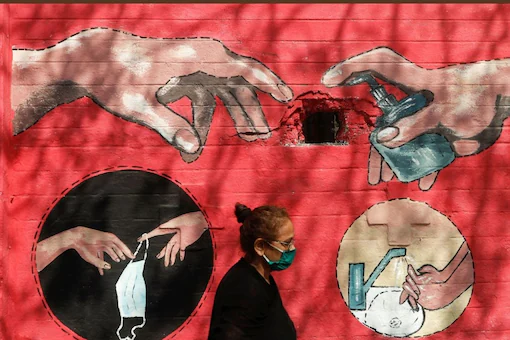The Brihanmumbai Municipal Corporation (BMC) announced on Wednesday (April 6) that a 50-year-old woman with a history of travel to South Africa may have been infected with the coronavirus’s newly discovered XE variant.

Until today, XE, a sub-variant of Omicron that triggered Covid-19’s third wave this winter, had not been discovered in India. The news of its finding triggered fears of a new wave of infections in India, where Covid-19 cases have been steadily declining for more than two years and are currently at their lowest level in that time.
However, Union Health Ministry authorities in New Delhi quickly stressed that the XE variant’s diagnosis in that particular patient had yet to be validated. In reality, early testing revealed that the virus found in the patient was not the XE type.
In a day or two, either way, a confirmation was expected.
BA.1 and BA.2 are two significant sub-variants of the Omicron variant, which is responsible for almost 90% of the infections discovered this year. A BA.3 sub-variant exists as well, but it is less frequent.
The BA.1 sub-variant was the most common throughout the early stages. The BA.2 was, however, the most prevalent in India during the third wave.
Even though it was not more harmful, BA.2 was proven to be more transmissible than BA.1. According to the World Health Organization, the BA.2 strain has been the most common during the last several months, accounting for 94% of all Omicron infections in the previous month (WHO). The BA.1 type is becoming increasingly rare.
The XE variation is referred to as a ‘recombinant’. This suggests it has the mutations present in both BA.1 and BA.2 Omicron variants. This was originally identified in January in the United Kingdom, and more than 600 examples of XE have since been discovered in other nations.
Recombinant variations are a regular occurrence. Variations with mutations that are similar to two or more known variants occur often. In fact, variations including the Delta and Omicron hallmark mutations have been discovered.
In viruses and other species, the random process of genetic changes continues indefinitely. However, only a tiny percentage of these changes have a major impact on the virus’s ability to infect or produce serious illness.
It has been discovered that XE is approximately 10% more transmissible than the prevalent BA.2 variation. However, this is a minor advantage that XE possesses, and even this has yet to be validated.
The lack of a notable rise in the incidence of the XE variation since its discovery three months ago suggests that it may not be a major concern at this time.
The clinical presentation of the XE variation is no different than that of BA.1 or BA.2. In comparison to other Omicron variations, it has not been proven to induce a more severe version of the disease. As a result, the XE version is not distinguished from Omicron.
It would not be unexpected if the XE variation is discovered in India, either in the Mumbai woman or in a later case. The majority of travel restrictions have been lifted, and international aviation travel is nearly back to pre-pandemic levels.
Furthermore, the development of XE, or any other recombinant Omicron variation, in the Indian population cannot be ruled out. It’s also conceivable that the XE variation is currently circulating in India but has yet to be discovered.
The reality is that a new wave of infections in India cannot be ruled out, given that the virus has not been eradicated and is still evolving.
However, this condition is unlikely in the short term unless a new variety emerges that is either considerably more transmissible, has particular skills to overcome human immunity developed from earlier infection, or causes more severe illness.











